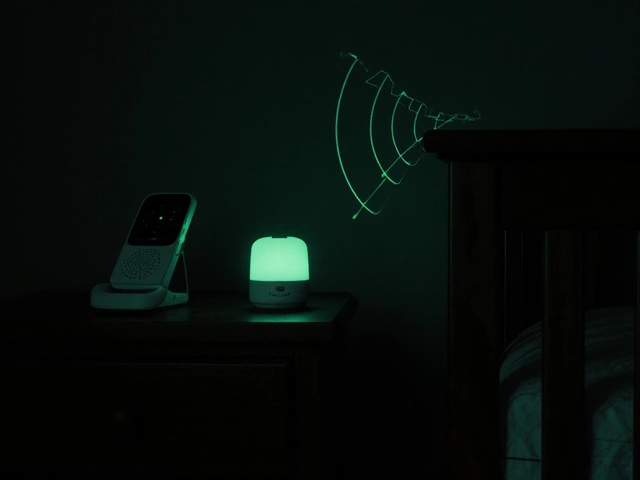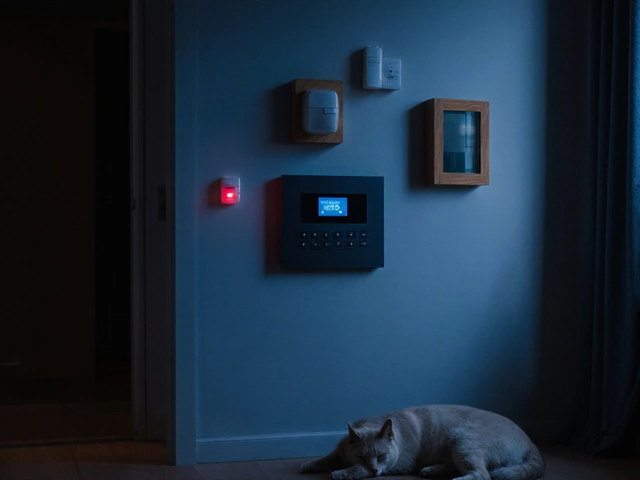Ever had your neighbor give you the side-eye because your dog just won’t quit barking? You’re not alone, and you’ve probably looked up every trick in the book. But when you stumble onto anti-bark collars, things get complicated: are they safe, and do vets actually stand by them?
Most vets are pretty cautious about anti-bark collars. Sure, the promise of peace and quiet sounds tempting, but these collars aren’t just a quick fix—they can backfire. You’ll find vets leaning toward training and understanding what’s driving your dog’s noisy habits rather than putting faith in a collar that zaps or sprays. It’s not just their professional opinion; it’s backed by research showing that fear and pain can mess up your dog’s behavior even more.
People often search for a gadget to magically silence their pup, but collars that punish barking mostly treat the symptom, not the cause. Before you grab one off the shelf, it’s worth digging deeper into what’s really behind all the woofing—and what your vet actually recommends. There are smarter, pet-friendly ways to manage barking without risking your dog’s wellbeing (or your relationship with your neighbors).
- Why Do Dogs Bark So Much?
- What Do Vets Really Think About Anti-Bark Collars?
- Risks and Side Effects You Should Know
- What Humane Alternatives Actually Work?
Why Do Dogs Bark So Much?
Barking is just how dogs talk. They use it to say different things, kind of like when we have a bunch of reasons for raising our voice. Some dogs bark to warn you about someone near the house, some just want attention, and others get anxious if left alone (hello, separation anxiety).
Here’s the breakdown on the main reasons you’ll hear your pup going nuts:
- Alerting: Dogs are pretty much natural watchdogs. When someone walks by your fence, or a strange car pulls up, barking is their way of alerting you and claiming their turf.
- Loneliness or Boredom: If your dog spends hours alone, they can get bored or feel lonely. Barking helps them pass the time or grab your attention—anything to break up the silence.
- Anxiety: Dogs with separation anxiety will bark when you leave the house or even when you just step outside for a minute. It’s their way of coping with being left behind.
- Excitement: Some dogs bark when they’re hyped up, like when you grab the leash or when visitors show up at the door.
- Health Issues: Sometimes barking means something hurts or your dog isn’t feeling right. Older dogs with hearing loss or cognitive problems might bark more than usual.
Breed also matters—a beagle and a basenji have totally different ideas about how much noise is normal. Training (or lack of it) and daily routines play a part, too. Instead of zeroing in on the barking itself, figuring out anti-bark collars or any other fix depends on what’s making your dog speak up in the first place. Addressing the reason, rather than just the noise, changes everything.
What Do Vets Really Think About Anti-Bark Collars?
When it comes to anti-bark collars, most vets aren’t exactly fans. You’ll find that veterinary experts, including those from the American Veterinary Society of Animal Behavior, actually recommend against using them in most cases. Why? Because these collars—especially the ones that shock or spray—rely on punishment, not teaching.
The problem is, punishment-based collars don’t solve the real issue. Dogs bark for lots of reasons: boredom, fear, anxiety, or sometimes just excitement. If you slap a collar on that stops the barking but doesn’t deal with why your dog’s making noise, you risk piling on extra stress and even bigger behavioral problems in the long run.
Vets see the fallout from anti-bark collars all the time. Sometimes the dog gets scared or starts acting aggressive. Those collars can even make some dogs nervous around their humans. Here are a few common worries vets talk about:
- Collars might increase anxiety or fear-based problems.
- Dogs could start being sneaky—barking when you’re not around or only when the collar’s off.
- Punishment doesn’t teach a dog what you want them to do instead.
According to a 2023 survey shared at a veterinary behavior symposium, nearly 70% of vets said they would never suggest shock-based anti-bark collars. Only about 12% had ever recommended a citronella or vibration collar, and that’s usually as a last resort. Here’s a quick look at some of the data:
| Collar Type | Vets Who Recommend |
|---|---|
| Shock (static) | 5% |
| Citronella Spray | 9% |
| Vibration/Ultrasonic | 12% |
| None/Use Alternatives | 74% |
The most important thing vets stress is getting to the bottom of the barking first. They’ll usually say you should talk to a trainer or a vet behaviorist. Modern training focuses more on positive reinforcement and setting up your dog for success. That way, you’re not just stopping noise—you're actually helping your dog and keeping your neighbors happy.
If you’re feeling stuck, chat with your vet before turning to an anti-bark collar. There are often easier, safer ways to get some peace and quiet.

Risks and Side Effects You Should Know
Before strapping any anti-bark collar on your dog, it pays to know what you’re signing up for. These collars work by shocking, spraying citrus, or making a high-pitched sound every time your dog barks. That’s a big deal, and the downsides aren’t small. Let’s break it down.
First, the shock from an electric collar isn’t just a tap. Even on the lowest setting, studies from major vet colleges in the U.S. show that about 35% of dogs experience stress symptoms—tail tucking, whining, or even refusing to come near their collar or their owner. And it’s not just a quick jolt: dogs can get more anxious over time, not less.
- anti-bark collars can make your dog afraid of other things in the home, not just barking (think: doorbells, guests, even you).
- One research review from 2021 found that dogs wearing shock collars were more likely to show aggression or nervous behavior later on—even when the collar was gone.
- Citrus spray collars sound harmless, but many dogs will start scratching at their faces or even develop skin rashes. Dogs with allergies? Worse still.
- Collars that beep or buzz can be too sensitive and go off randomly, confusing your dog and making training harder, not easier.
Just to give you a clearer picture, here’s a quick rundown on common side effects and how often they show up in studies:
| Side Effect | Type of Collar | Reported Rate |
|---|---|---|
| Stress/Anxiety | Shock, Sound | 30-40% |
| Skin Irritation | Spray | 25% |
| Increased Aggression | Shock | 15% |
| Misdirected Fear | Any | 20% |
All this stuff doesn’t mean every single dog will have a meltdown. But the odds aren’t low. And it’s tough to predict which dogs will have a stronger reaction. Vets see plenty of cases where a collar that’s meant to calm things down actually makes everything worse—more barking, anxiety, or even health problems. There are better ways to handle barking that don’t come with these risks.
What Humane Alternatives Actually Work?
So if anti-bark collars aren’t the answer, what really works? You want something that calms your dog and keeps the peace without any drama or guilt. Luckily, there are proven strategies that both veterinary professionals and dog trainers actually support.
The first step is to figure out why your dog is barking. Is it boredom, separation anxiety, or is your dog just being a watchdog? Different problems need different fixes, but here are some solutions nearly every vet will tell you to try before even thinking about collars:
- Dog training and behavior modification: Positive reinforcement-based training is the gold standard. Instead of punishing barking, you give your dog praise, treats, or toys when they’re quiet. Studies in 2023 from the American College of Veterinary Behaviorists showed that most dogs respond better and faster with positive methods versus punishment.
- Mental and physical exercise: When dogs get enough play and stimulation, useless barking drops off. Daily walks, puzzle toys, and games like fetch can channel that energy in the right direction.
- Interactive toys and chews: These keep dogs busy while you’re out and reduce bored or anxious barking. They also make your dog’s environment way more interesting.
- Sound masking: Playing gentle music, white noise, or even leaving the TV on can help drown out triggers like outside noises, making your dog less likely to react to every sound.
- Pet-friendly alarms and smart devices: New tech is being designed to help, not punish. For example, there are alarms that use gentle sounds or vibrations to redirect your dog’s attention—no pain or fear involved.
- Professional help: If your dog’s barking is unbearable and nothing seems to help, a certified dog trainer or veterinary behaviorist can tailor solutions to your situation. It’s not cheating to call in backup!
If you like seeing the real numbers, check out this fresh comparison:
| Method | Success Rate (Reported by Owners) | Vet Approval |
|---|---|---|
| Positive Reinforcement Training | 84% | Yes |
| Interactive Toys/Exercise | 79% | Yes |
| Sound Masking Devices | 65% | Yes |
| Anti-Bark Collars | 32% | No |
The numbers don’t lie—using a anti-bark collar isn’t just less effective, it’s not even on most vets’ list of safe options. Your best bet is always using positive, supportive methods that set your dog up for success. Trust me, both you and your pup will be happier for it!



